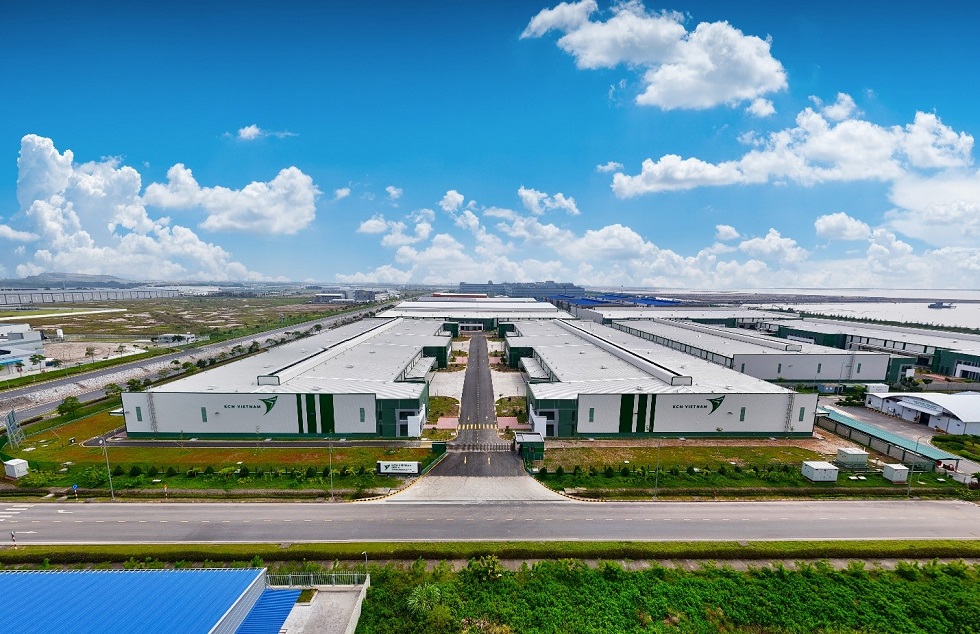The recent U.S. presidential election suggests a positive short-term outlook for foreign direct investment (FDI) in Vietnam, boosting prospects for the industrial real estate sector. However, long-term success hinges on national strategies that attract FDI, enhance infrastructure, and boost labor productivity.
FDI inflows expected to remain stable
Following Donald Trump’s return to the White House, industrial estate stocks surged, reflecting market expectations that Vietnamese industrial parks will continue to thrive. While analysis suggests the “China +1” production shift trend will continue, pressure from tariffs will be higher under Trump 2.0 than in his previous term. Tariffs on Chinese imports to the U.S. could reach 60% or higher, and there is a possibility of tariffs rising on imports from other countries, including Vietnam.
Despite this, FDI inflows into Vietnam are predicted to be steady. At the recent Investment Forum 2025, the Asian Development Bank’s (ADB) chief economist in Vietnam, Nguyen Ba Hung, highlighted Asia’s attractiveness for capital due to the trend of investment diversification from China. Vietnam is among the beneficiaries, and this trend is expected to continue in the coming years.
Mirae Asset Securities Company, citing an EIU report, notes that Vietnam may initially benefit from supply chain diversification, though its reliance on the U.S. export market presents challenges. FDI inflows are unlikely to surge immediately after the Trump administration takes office, but they are expected to continue stable growth, supported by the long-term strategy of shifting production out of China.
However, Vietnam faces intensifying competition from other emerging economies like India, Indonesia, and Malaysia. These countries are vying for investment based on factors like labor costs, productivity, infrastructure, and proactive policies designed to attract foreign capital.
Michael Kokalari, director of Macroeconomic Analysis and Market Research at VinaCapital, said Vietnam can be a valuable partner for the U.S., helping it reduce its reliance on Chinese goods.
Even in a scenario where the U.S. imposes comprehensive tariffs, for example 5-10% on imports from all countries other than China, Vietnam will still retain its competitive edge in attracting FDI. “The factors that make Vietnam attractive to manufacturers and have attracted billions of U.S. dollars in FDI will continue. However, Vietnam will reap greater benefits if it proactively addresses its trade surplus with the U.S. before this issue becomes a concern for the new administration,”Kokalari said.
Industrial real estate shows improvement
Recent market reports indicate that Vietnam’s industrial real estate market improved in the first nine months of the year, with supply continuing to increase.
Cushman & Wakefield’s third-quarter report shows that two new industrial parks opened in Bac Ninh and Hai Duong provinces, adding 274 hectares of leasable industrial land. This brings the total supply in the northern key economic zone to 16,700 hectares, a 16% increase from the previous year. In the south, a new industrial park in Long An Province brings the total supply to approximately 28,300 hectares, a 1.6% rise.
Four key industrial provinces in the southern key economic zone, including Binh Duong, Long An, Dong Nai, and Ba Ria-Vung Tau, have announced their master plans for 2021-2030. These plans are projected to increase the area of industrial land by 6,000 hectares by 2027. The north also expects to see a similar rise in available industrial land, with nearly 4,700 hectares of land becoming leasable during the same period.

Specialized facilities like modern ready-built warehouses and factories are expanding. For example, in late October, KCN Vietnam Group JSC launched the first phase of a high-quality ready-built warehouse project in Sub-zone D, Nhon Trach VI Industrial Park in Dong Nai Province.
In the year through October, KCN Vietnam Group JSC initiated four new projects, providing nearly 400,000 square meters of new industrial floor space to the market. In the foreseeable future, the corporation plans to start a new project in the north while expanding its land fund in the South.
By the end of the third quarter, the total supply of modern ready-built warehouses in the south rose to two million square meters, up 4.4% quarter-on-quarter and 14.7% year-on-year, according to JLL’s report. “After a period of slowdown, the Southern warehousing market rebounded with positive net absorption of nearly 160,000 square meters in the third quarter, driven by domestic manufacturers and third-party logistics providers (3PLs). Facilities located in the core area, with easy access to HCMC, continue to be sought after,” JLL noted.









